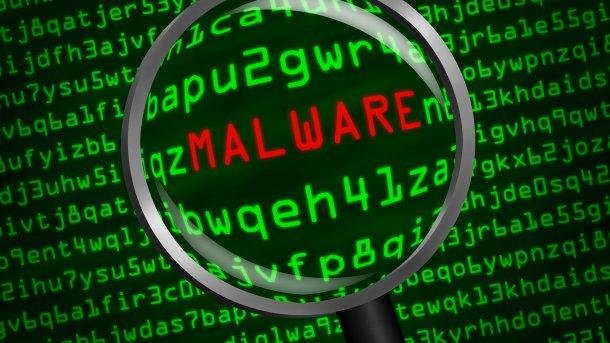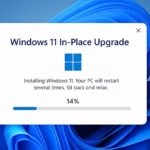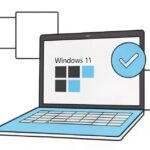Click here to buy secure, speedy, and reliable Web hosting, Cloud hosting, Agency hosting, VPS hosting, Website builder, Business email, Reach email marketing at 20% discount from our Gold Partner Hostinger You can also read 12 Top Reasons to Choose Hostinger’s Best Web Hosting
If you’re searching “what antivirus software that will detect Black Lotus,” you’re facing a real worry: a boot-level threat that can survive reboots and disable normal protections. That’s scary because a UEFI bootkit like BlackLotus operates below the OS — traditional antivirus scanners often can’t see or fully remove it, and an infection can persist after reinstalling Windows. The immediate solution isn’t a single “best” AV; it’s a layered response: understand how BlackLotus works, use endpoint/firmware protections that can detect its behavior, apply vendor fixes and Secure Boot mitigations, and monitor for the specific indicators of compromise that vendors have published. Below I explain what’s realistic, which vendors provide meaningful coverage, and a practical checklist to protect your fleet.
3 VPNs That Pass All Tests (2025)
- NordVPN: Zero leaks in tests, RAM-only servers, and Threat Protection to block malware.
- Surfshark: Unlimited devices, Camouflage Mode for bypassing VPN blocks, and CleanWeb ad-blocker.
- ExpressVPN: Trusted Server tech (data wiped on reboot) and consistent streaming access.
What is BlackLotus — briefly, and why it matters
BlackLotus is a UEFI bootkit (publicly discussed since late 2022) that targets the earliest software stages of Windows boot to bypass Secure Boot and subvert OS defenses. Because it can run before the operating system, it may disable Defender, kernel protections, or tamper with BitLocker — giving attackers persistence and stealth that ordinary file-scanning AVs struggle to counter. The U.S. defense community and Microsoft published guidance because the threat model requires both firmware-level understanding and coordinated mitigation.

Short answer: is there a single antivirus that will reliably detect BlackLotus?
No. There is no one antivirus product you can install on a running Windows system that guarantees detection and clean removal of an active UEFI bootkit. UEFI bootkits live under the operating system, and in many cases attackers can disable or tamper with OS-level scanners. That said — modern endpoint detection & response (EDR) platforms, firmware integrity tools, and the built-in Microsoft Defender for Endpoint ecosystem provide meaningful detection and hunt capabilities when combined with firmware/boot hardening and vendor-provided IoCs and rules. Microsoft’s guidance explicitly describes detection steps and telemetry defenders should look for; other security vendors have published detection coverage and Sigma/EDR rules.
Which VPN 2024 Provider Stands Out from the Crowd to Ensure Effective Online Security?
How detection actually works (and why EDR matters)
Traditional AV (file signatures): may detect some payloads once the OS is running, but a bootkit can disable realtime protections or hide files from the OS scanner. Relying on signature-only AV is insufficient.
EDR & behavioral telemetry: good EDRs (e.g., Microsoft Defender for Endpoint, CrowdStrike, SentinelOne, Trellix/McAfee, Sophos Intercept X) can surface suspicious behaviors — unexpected driver loading, attempts to disable security services, or unusual Winlogon network activity. Those telemetry signals are where most current detections are made. Microsoft states Defender for Endpoint will generate alerts and offers hunting guidance for BlackLotus indicators.
Firmware / UEFI scanning & management: specialized tooling and vendor firmware hardening (Secure Boot policy, firmware updates) are required to prevent installation or to detect changes at boot time. Government mitigation guides stress firmware integrity checks and managing Machine Owner Keys (MOK) where relevant.
Network & SIEM correlation: many bootkit operations lead to anomalous network patterns (unexpected outbound connections from system processes). Correlating EDR + network logs helps spot post-boot C2 activity that indicates compromise.
Is Using Free Proxy Lists Safe? Understanding the Risks and Safer Alternatives
Practical detection & response checklist
Follow this prioritized checklist if you want to move from “hoping AV will detect it” to a defendable posture:
Immediate (hours):
Confirm patch levels: ensure Windows and firmware/UEFI are patched with latest vendor updates addressing Secure Boot/bootloader issues. (Microsoft & hardware vendors issued patches).
Enable and monitor Defender for Endpoint or equivalent EDR on all endpoints — enable tamper protection and onboarding telemetry to EDR so alerts appear in your console.
Check Defender/AV health: look for evidence an AV was disabled or its drivers tampered with (Windows Event logs may show Defender service issues).
Short term (1–3 days):
Hunt for IOCs: use vendor IoCs and Sigma rules (search for BlackLotus-related rules from Microsoft/EDR vendors) to run hunts across telemetry.
Confirm Secure Boot policy: ensure platform Secure Boot keys are correct and no unauthorized Machine Owner Key (MOK) was enrolled. Lock down BIOS/UEFI provisioning access.
Medium term (1–2 weeks):
Firmware inventory & attestation: use firmware management tools to inventory UEFI versions and perform firmware integrity checks. Consider vendor firmware attestation where available.
Network controls: block or monitor unusual outbound traffic from system processes (notably suspicious HTTP calls originating from winlogon.exe or other system services).
If you suspect an infection:
Isolate the device (network + physical as needed), capture forensic images (UEFI regions, disk images), and coordinate with incident response — a clean OS reinstall may not remove a UEFI infection without firmware reflash or MCU-level remediation. Follow Microsoft and defense guidance for forensic steps. 8 Effective Strategies for Ransomware Recovery
Recommended tooling approach
EDR + EPP combination: use a modern EDR (behavioral, kernel/driver monitoring) together with endpoint protection (EPP). Microsoft Defender for Endpoint is often mentioned because it integrates Windows telemetry deeply and Microsoft published BlackLotus detection guidance; other EDR vendors also publish coverage — choose one with firmware/boot-level hunting capabilities.
Firmware management & attestation: use UEFI firmware inventory tools from hardware vendors or third-party firmware security vendors to detect boot-time changes.
SIEM & network detection: tie EDR events into a SIEM and watch for the post-boot C2 patterns described in vendor guidance.
Endpoint hardening & tamper protection: enforce BitLocker with TPM and PIN, enable HVCI/Memory Integrity where supported, and lock down administrative access.
What is a VPN, and Is It Really Worth Using? Pros and Cons You Need to Know
New perspective — an owner/operator playbook few articles give
Most coverage lists “BlackLotus exists, be careful.” Here’s a practical owner/operator playbook that produces measurable improvements in 30 days:
Week 1: Patch Windows + firmware across the top 80% of your fleet (inventory-driven), enable Defender for Endpoint telemetry, and turn on tamper protection.
Week 2: Run Sigma/EDR hunts for BlackLotus indicators, collect results into a prioritized incident list, and start manual verification on highest-risk hosts.
Week 3–4: Implement firmware attestation on critical asset groups, enforce Secure Boot key management, and deploy network rules to block suspicious outbound paths used by bootkit payloads.
Measure: Track three KPIs — % endpoints with EDR telemetry enabled, time-to-detect anomalous winlogon/network events, and % of fleet with firmware up-to-date. Aim to reduce “time-to-detect” by 50% in 30 days.
This operational plan turns the abstract “UEFI bootkit problem” into measurable security improvements rather than an endless vendor chase. The key is telemetry + firmware inventory + rapid patching — not a single antivirus product. (Guidance and hunt examples are documented in vendor publications.)
Key Takeaways
No single AV can guarantee removal of a UEFI bootkit like BlackLotus. Relying only on signature-based antivirus is insufficient.
Modern EDRs + Defender for Endpoint provide the best OS-level detection and hunting telemetry. Use them to detect behavioral signs and generate alerts.
Firmware/UEFI hardening and attestation are critical. Patches, Secure Boot key management, and firmware integrity checks reduce attack surface.
Operational playbook beats product worship. Patch, enable telemetry, hunt, and measure — that sequence yields real risk reduction in 30 days.
If compromised, expect forensics + firmware remediation. Reimaging alone may not be enough; involve IR teams and follow vendor/defense guidance.
FAQs
Q: Will Microsoft Defender detect BlackLotus automatically?
A: Defender for Endpoint includes telemetry and detection guidance and can generate alerts if indicators are present, but it may be disabled by a sophisticated bootkit. Use Defender for Endpoint with tamper protection and hunt for the published indicators.
Q: Can I remove BlackLotus by reinstalling Windows?
A: Not reliably. Because UEFI bootkits persist at firmware/boot levels, reinstalling the OS may not remove them. Firmware reflash or specialized remediation steps are often required.
Q: Which vendors have published detection rules?
A: Microsoft and multiple EDR vendors have published guidance, IoCs, and Sigma rules. Use vendor IoCs and run EDR hunts across your estate.
Q: What immediate logs should I check?
A: Windows Event logs for Defender/antivirus service failures, unexpected service stops, and unusual outbound network connections from system processes (e.g., winlogon.exe) — these are indicators Microsoft flagged.
Conclusion
If your exact search is “what antivirus software that will detect Black Lotus,” the practical answer is: no single antivirus will be a silver bullet. The right approach combines endpoint detection (EDR), Microsoft’s Defender for Endpoint telemetry where possible, firmware patching and key management, and proactive hunting for the indicators vendors published. Follow the mitigation guidance from Microsoft and defense authorities and treat firmware integrity as a first-class part of your security program. Want a quick start? Patch your fleet, enable EDR telemetry, run a Sigma hunt for the published BlackLotus indicators, and harden Secure Boot — then measure your detection KPIs. For more operational security guides, see SmashingApps’ security resources.
Call to action: Review Microsoft’s BlackLotus guidance and the Defense mitigation guide linked below, enable EDR telemetry on critical hosts, and run a targeted hunt in the next 72 hours. If you’d like, I can turn the checklist above into a printable incident playbook for your team.
Sources
Microsoft security guidance: Guidance for investigating attacks using CVE-2022-21894 — the BlackLotus campaign. Microsoft
U.S. Defense mitigation guide (PDF): BlackLotus Mitigation Guide. U.S. Department of Defense
Disclaimer: This article is for informational and educational purposes only. It does not guarantee protection against all threats. Always follow vendor and official security advisories for the most up-to-date guidance.
Now loading...






